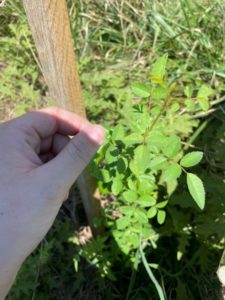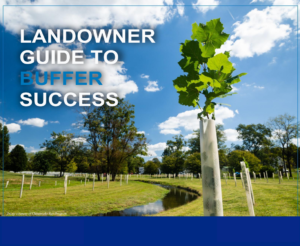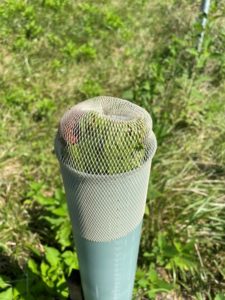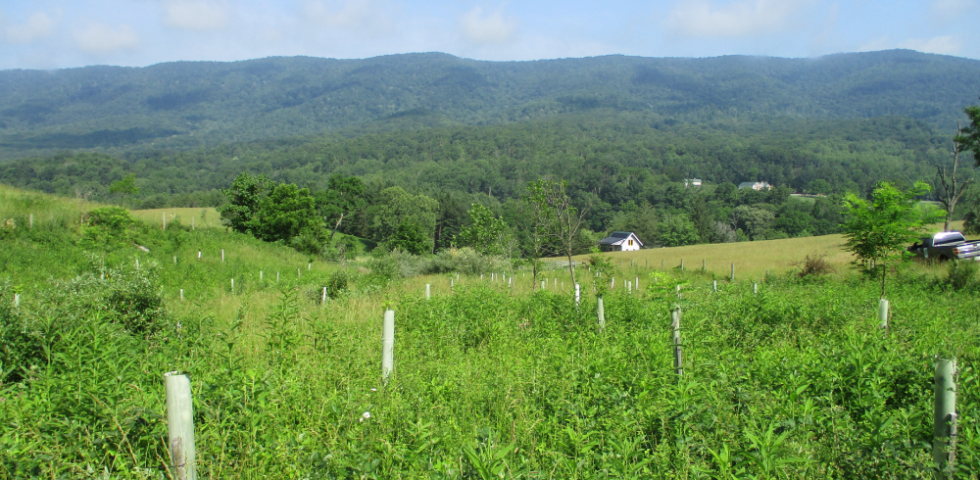 It’s December, and a chill is in the air. The deciduous trees have lost their leaves, and you know what time it is: tree planting season! But even after seedlings are in the ground, our work isn’t over. There’s a multitude of buffer maintenance activities for every season, which are critical for seedling survival and fostering the overall health of a robust riparian forest.
It’s December, and a chill is in the air. The deciduous trees have lost their leaves, and you know what time it is: tree planting season! But even after seedlings are in the ground, our work isn’t over. There’s a multitude of buffer maintenance activities for every season, which are critical for seedling survival and fostering the overall health of a robust riparian forest.
In fact, winter is ideal for tasks like removing wasp nests from tubes (since the wasps are less active), fixing leaning or downed tree shelters, and removing bird nets if needed. With less active vegetative growth compared to warmer months, maneuvering around buffers is often much easier. For more details on winter buffer maintenance activities, we recommend reading pages 22-23 in the newest version of the Landowner Guide to Buffer Success (2022), adapted specifically for Virginia landowners.
 Buffer Maintenance in the Upper James
Buffer Maintenance in the Upper James
The Chesapeake Bay Foundation (CBF) is grateful to the Virginia Environmental Endowment (VEE) for recognizing the importance of ongoing buffer maintenance by funding three years of establishment support for all our buffer projects in the Upper James River watershed.
After mowing and herbicide work was completed by contractors in late spring and summer this past year, CBF staff conducted survival checks and shelter maintenance that revealed some excellent news—an average of 93% of seedlings survived in our buffers across the Upper James watershed. Where seedlings didn’t survive, we will be replanting in the coming months.
During the time of our survival checks (late summer), invasive plants and other weeds were actively growing, often within tree shelters. Just as shelters create an ideal “home” for trees as they are becoming established (keeping trees warm, moist, and protected from damage), weeds also thrive in these conditions. So, we took the opportunity to remove weeds whenever possible, as well as to straighten leaning or downed shelters and pull off bird nets that were ready for removal. See pages 25-26 of the Guide for more details on summer and fall maintenance tasks.
 Other Opportunities
Other Opportunities
If you have a buffer that wasn’t planted through the James River Buffer Program, ask your local Soil and Water Conservation District if you are eligible for the woodland buffer filter area maintenance practice (FR-3M) offered through the Virginia Agricultural Cost-share Program.
And even if you don’t have a forested buffer of your own, you can still be a riparian steward! There are opportunities to volunteer both with James River Association and CBF, depending on the locality or region you want to work in. If interested in helping CBF staff steward (maintain) buffers in Rockbridge, Highland, Bath, or Alleghany counties, please contact Sarah Coffey at scoffey@cbf.org.

